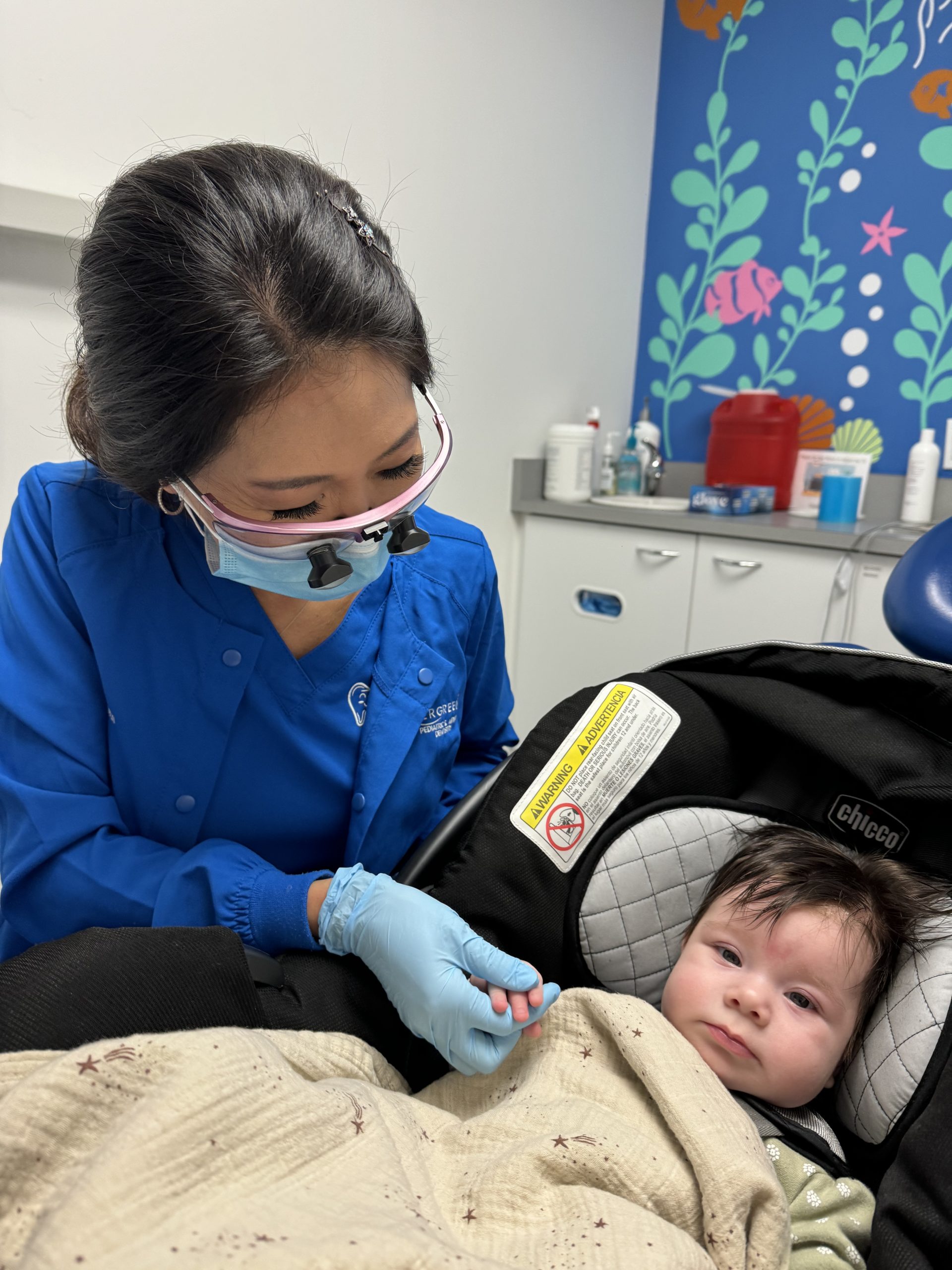Understanding Infant Tongue Tie: Causes, Symptoms, and Treatment Options
Navigating the early stages of parenthood brings its own set of challenges, one of which may be managing an infant tongue tie. This condition, often identified in the first days or weeks of a baby’s life, can affect feeding, and later on, speech development. Here, we’ll explore what tongue tie is, its causes, symptoms, and the various treatment options available, with a focus on ensuring parents are equipped with the knowledge they need to support their child effectively.
What is Tongue Tie?
Tongue tie, also known in the medical world as ankyloglossia, occurs when the strip of skin that connects a baby’s tongue to the bottom of their mouth, referred to as the lingual frenulum, is shorter than what is typically observed. This anomaly can significantly restrict the tongue’s movement. Such a limitation is particularly problematic because it can make it exceptionally challenging for the infants in breastfeeding sessions. This improper latching can, in turn, severely impact the baby’s ability to feed efficiently and may also cause considerable discomfort for the mother, potentially leading to issues such as nipple pain and frustration during nursing.
While tongue tie is relatively common, affecting approximately 4-11% of newborns, the severity of the condition and the degree to which it interferes with feeding can vary significantly from one infant to another. In some cases, the condition is mild and may not noticeably affect breastfeeding. However, in more severe instances, the baby might struggle to gain weight or could experience colic-like symptoms due to swallowing air while feeding. This not only affects the child’s health and development but can also lead to emotional distress for the parents, who may feel anxious and concerned about their baby’s feeding challenges and overall wellbeing.
For these reasons, early diagnosis and intervention can be crucial. Health professionals, including pediatricians and lactation consultants, can offer invaluable support and guidance. In some cases, a simple surgical procedure called a frenotomy, where the restrictive lingual frenulum is clipped, can be performed to immediately improve the situation. This procedure, which is often quick and associated with minimal discomfort for the baby, can significantly enhance the breastfeeding experience for both mother and child, promoting a more effective feeding process and fostering a closer mother-infant bond.

Examination of Tongue Tie in Infants
Causes of Tongue Tie in Infants
The precise causes of tongue tie in infants are not entirely understood, and research into this area is ongoing. However, several factors are considered to be influencers in the development of ankyloglossia. It is believed that genetic predisposition plays a significant role; tongue tie often occurs in families with a history of the condition, suggesting a hereditary component. Furthermore, environmental factors during pregnancy, such as maternal nutrition, exposure to certain substances, or gestational diabetes, may also contribute to its occurrence. Some studies suggest that the condition is more commonly found in boys than in girls, but the reasons for this disparity are not clear.
Another consideration is the role of genetic mutations or variations that may affect the development of the lingual frenulum during the embryonic stage. The frenulum itself develops as the baby grows in the womb, and anomalies in its formation can lead to a tighter, shorter frenulum that restricts tongue movement more than usual.
Despite these insights, there is still much to learn about why tongue tie occurs in some babies and not others. Ongoing research and clinical studies aim to better understand the underlying causes of ankyloglossia, which could lead to more effective screening, prevention, and treatment strategies in the future.
Signs and Symptoms of Infant Tongue Tie
Identifying tongue tie in infants can be challenging, especially for new parents. However, being aware of the common signs and symptoms can aid in early detection and intervention. Some of the key indicators include:
- Difficulty Latching: Infants with tongue tie may struggle to latch onto the breast or bottle, often slipping off or failing to maintain a deep latch. This issue can result in inefficient feeding and frustration for both the baby and the parent.
- Poor Weight Gain: Due to the difficulties in feeding, a baby with a tongue tie might experience slower than expected weight gain or even weight loss, signaling that they are not receiving enough nourishment.
- Colic and Gas: Tongue-tied babies may swallow more air while attempting to feed, which can lead to increased gassiness or symptoms similar to colic, such as prolonged periods of crying and apparent abdominal discomfort.
- Nipple Pain or Damage: Mothers nursing a tongue-tied infant often report severe nipple pain, damage, or both. This discomfort is due to the improper latch, which can also lead to decreased milk supply over time.
- Clicking Sounds During Feeding: A distinct clicking sound while the baby is feeding is a common symptom, caused by the baby struggling to maintain a proper latch and sucking air.
- Restricted Tongue Movement: A visible sign of tongue tie is a limited range of motion in the baby’s tongue. The infant may be unable to stick out their tongue beyond their lower gum line or lift it to the upper gums or roof of the mouth.
Recognising these signs early on can prompt parents to seek the necessary medical advice and support, paving the way for appropriate treatment options to be explored.
Diagnosis and Assessment
Diagnosis and assessment of infant tongue tie involve a careful examination by a healthcare professional, often starting with a thorough history taking to understand the feeding difficulties and any familial occurrence of tongue tie. During the physical examination, the practitioner will look for characteristic signs of tongue tie, such as a tightly anchored lingual frenulum that restricts the movement of the tongue. The examination may include assessing the baby’s ability to move their tongue in various directions and evaluating the shape and functionality of the tongue during a feeding attempt, either at the breast or with a bottle.
The assessment can be subjective, and as such, various tools and scoring systems have been developed to help standardize the diagnosis. One commonly used method is the Hazelbaker Assessment Tool for Lingual Frenulum Function, which consists of a series of appearance and functional items to be scored. This tool helps in making a more objective decision regarding the need for intervention.
Additionally, weighing the baby before and after feeding can provide concrete evidence of how much milk the baby is able to intake during a feeding session, further supporting the diagnosis. In some cases, further evaluation by a specialist, such as a pediatric dentist or an ear, nose, and throat doctor, may be recommended to assess the necessity and feasibility of a frenotomy.
It is important for the assessment process to be thorough and holistic, considering not only the physical signs of tongue tie but also the impact on feeding and the emotional well-being of both the infant and the mother. Early and accurate diagnosis is crucial in avoiding prolonged feeding difficulties and ensuring that appropriate support and treatment options are explored to improve the feeding experience.
Treatment Options
Treatment for infant tongue tie varies based on the severity of the condition and the degree to which it impacts feeding and growth. The primary intervention considered is a simple surgical procedure known as a frenotomy, or “tongue-tie snip,” which involves cutting the tight frenulum to free the tongue’s range of motion. This minor operation can often be performed without anesthesia in infants, and it typically results in immediate improvement in feeding. Aftercare involves specific exercises to prevent the frenulum from reattaching as it heals and to encourage the baby to use the full range of motion of their now-freed tongue.
In cases where the tongue tie is less severe or if parents are hesitant about immediate surgery, alternative tongue tie treatments may include special feeding techniques or the use of feeding aids to improve the latch during breastfeeding. Lactation consultants or speech and language therapists can offer valuable support in these situations, providing targeted exercises designed to strengthen the baby’s tongue and jaw muscles.
For older children and in more complex cases of ankyloglossia, a frenuloplasty might be recommended. This procedure is more comprehensive than a frenotomy, involving the release of the frenulum followed by suturing to optimize healing and functionality. Given the more involved nature of a frenuloplasty, it is typically performed under general anesthesia.
Regardless of the treatment path chosen, follow-up care is crucial to ensure the success of the intervention. This may include ongoing support from lactation consultants, speech therapists, or pediatric dentists to address any feeding or speech issues that may arise as the child grows.
It is essential for parents and caregivers to work closely with healthcare professionals to explore all available treatment options and to choose the path that best supports the child’s immediate and long-term health and well-being.
The Importance of Early Intervention
Early intervention for infants with tongue tie is vital, not only for alleviating immediate feeding difficulties but also for preventing a range of potential long-term complications. Early diagnosis and treatment can significantly enhance an infant’s ability to feed effectively, thereby supporting optimal nutrition, growth, and development. Additionally, addressing tongue tie early can prevent speech difficulties that might arise from restricted tongue movement, impacting the child’s ability to articulate certain sounds or words clearly.
Furthermore, early intervention can spare both the infant and the mother from undue stress, pain, and frustration associated with feeding challenges. For mothers, it can reduce the risk of developing mastitis, nipple trauma, and emotional distress, which can sometimes lead to early cessation of breastfeeding. For babies, resolving tongue tie early helps in fostering a positive feeding relationship, contributing to their overall sense of security and wellbeing.
The impact of untreated tongue tie extends beyond feeding and speech, potentially affecting dental health, including the development of gaps between the lower front teeth, and causing difficulties with oral hygiene later in life. Hence, early detection and appropriate management of tongue tie are crucial steps in safeguarding the health and developmental trajectory of affected infants, ensuring they have the best possible start in life.

Tongue Tied Infants Treatment
Tips for Coping with Infant Tongue Tie
Coping with infant tongue tie can be a challenging experience for parents and caregivers, but there are several strategies that can help make this period more manageable. First and foremost, seeking support from healthcare professionals such as lactation consultants, pediatric dentists for tongue tie, or speech therapists is crucial. These experts can provide guidance, reassurance, and practical tips tailored to your child’s specific needs.
Engaging in gentle, stretching exercises, as recommended by a healthcare provider, can help maintain the tongue’s mobility after a frenotomy and promote healing. It’s important to follow these exercises with care and consistency to prevent reattachment of the frenulum.
Additionally, finding a supportive community, whether online or in person, can provide valuable advice and emotional support. Other parents who have gone through similar experiences can offer insights and coping strategies that can ease the stress and isolation often felt during this time.
Taking care of your own emotional well-being is also essential. Coping with feeding difficulties can be emotionally draining, so ensure you’re taking time for self-care and seeking support when needed. Lastly, be patient and kind to yourself and your baby. Progress may take time, and there may be setbacks, but with the right support and interventions, most infants with tongue tie can feed effectively and thrive.
Conclusion
Infant tongue tie can present many challenges for parents and caregivers, but with prompt diagnosis and appropriate treatment, these challenges can be overcome. Seeking support from healthcare professionals, engaging in gentle exercises, finding a supportive community, taking care of one’s emotional well-being, and being patient are all essential strategies for coping with infant tongue tie. Through early intervention and ongoing support, infants with tongue tie can be given the best possible start in life, promoting their overall health and well-being. So if you suspect your child may have tongue tie, don’t hesitate to seek help from healthcare professionals to address any potential concerns and ensure a positive outcome for both you and your baby.
Evergreen Pediatric Dentistry
https://www.google.com/maps?cid=14720788683151219551
12910 Totem Lake Blvd NE #103, Kirkland, WA 98034, United States
(425) 814-3196
https://evergreenkidsdentist.com/


